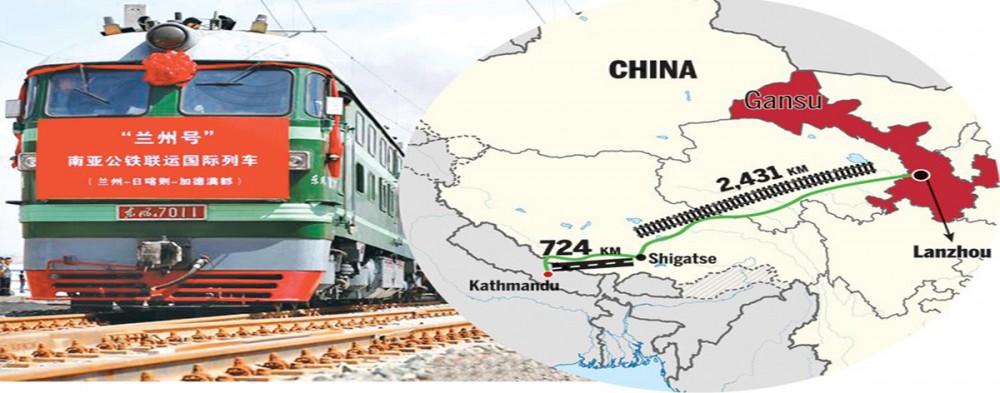
By Hu Weijia (25Nepal will use Chinese gauge standards for a planned nationwide rail network, the Nikkei Asian Review reported. It is easy to understand the disappointment in India, which failed to persuade Nepal to adopt its wider gauge, but there is no need to view Kathmandu’s reported decision as a threat.
Considering that a majority of Nepal’s third-country trade currently runs through India, a plan to hitch Nepal’s rail system to Chinese standards will reduce the landlocked nation’s dependence on India. New Delhi has to accept the fact that Nepal is strengthening its economic cooperation with China, and make the best policy choices for itself.
Choosing the Chinese gauge standard is an economic move by Nepal, and it has nothing to do with Kathmandu’s political stand.
China adopts the standard gauge specification of 1,435 millimeters, which is used by about 60 percent of the world’s railway lines. The standard gauge railway represents the future. If Nepal adopts Chinese gauge standards, it means the landlocked nation meets international standards. Doing so will make it easier for Nepal to integrate itself into the global railway network.
By contrast, Indian railways use various gauges. Some statistics show that tracks of the 1,676-millimeter broad gauge account for about 80 percent of Indian railway lines. Narrow gauges with tracks of 1,000, 762 or 610 millimeters form a small part of the country’s rail network. Since Indian railways have failed to achieve uniformity, Nepal can hardly make its railways conform with India’s network.
The Chinese gauge standard is a rational choice for Nepal, which as a landlocked nation is trying to promote infrastructure connections with the rest of the world and diversify its economic partners. A cross-Himalayan connectivity network between China and Nepal will end India’s monopoly over Nepal’s trade routes. It will also benefit India in the future by indirectly connecting India with China’s railway network through Nepal.
Hopefully, Kathmandu’s reported decision can impose pressure on India to adopt standard gauge lines in upgrading its railway network. Accidents are common on India’s dilapidated rail network, which is the most popular mode of long-distance transport for locals but has long suffered from underinvestment.
India may want to step up railway investment in the coming years, and standard gauge railways will help the country integrate into the Asian industrial chain and promote its long-term development.
The author is a reporter with the Global Times. [email protected]


